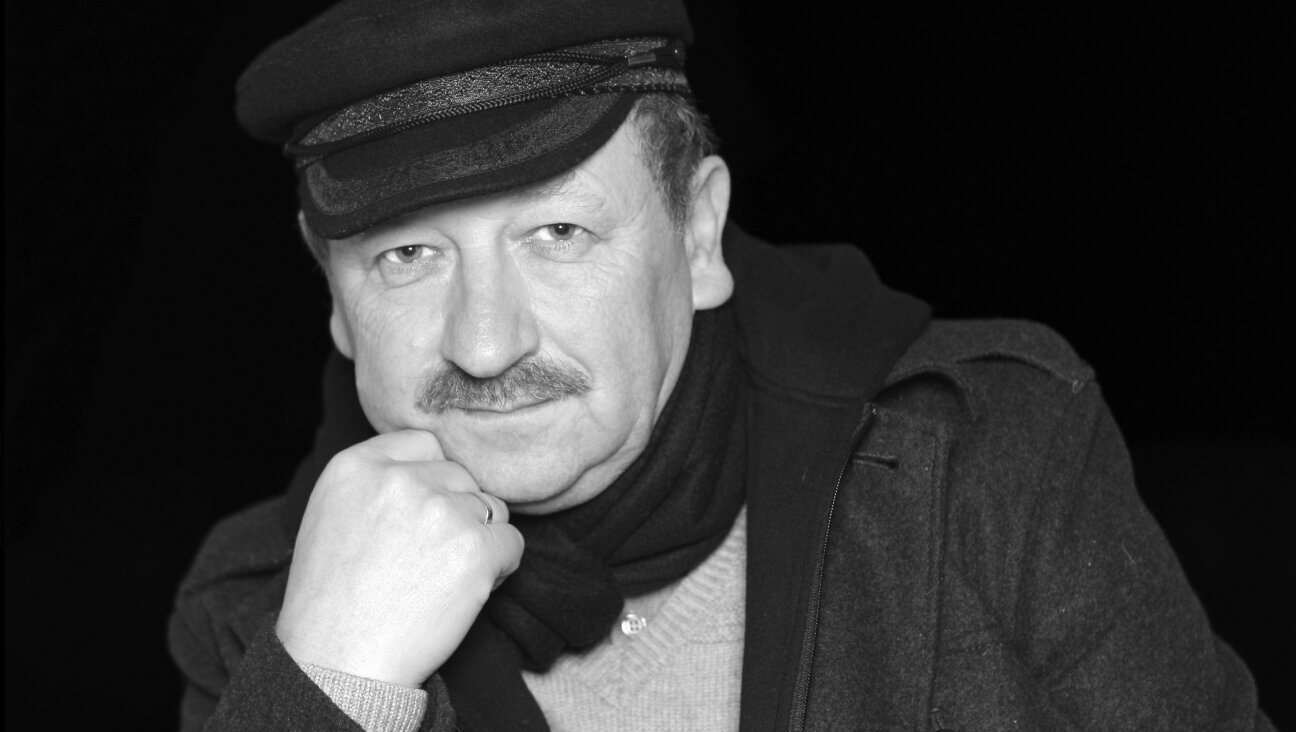In France, a Vexing Dilemma: Collaborate or Resist?

Anne Sebba Image by Getty Images
Les Parisiennes: How the Women of Paris Lived, Loved, and Died under Nazi Occupation
By Anne Sebba
St. Martin’s Press, 457 pages, $27.99
The perspective of time and new primary sources are chipping away at myths about resistance and collaboration under Nazi rule. Last year, for instance, the French response to defeat and occupation was the subject of both David Drake’s “Paris at War: 1939–1944” and Robert Gildea’s “Fighters in the Shadows: A New History of the French Resistance.”
Now, Anne Sebba, a former Reuters foreign correspondent and the biographer of Wallis Simpson, trains her gaze on the women of Paris, from 1939 to the postwar period. Her thesis, in tune with current historiographical trends, is a simple one: “It’s complicated.”
Her intent, she writes, is “to avoid black and white, good and evil, but instead to reveal constant moral ambiguity….” — a project evocative of Primo Levi’s paradigmatic grey zone. But to Sebba, the results of her inquiry aren’t grey, but rather “kaleidoscopic,” a matter of shifting focus and interpretations.
Crammed with detail, often to a fault, “Les Parisiennes” is a prodigy of research, undertaken as the last memories of the war fade into history — or oblivion. But judicious editing would have made for a stronger book, more attuned to graceful storytelling.
Sebba, who is British, has sought out camp survivors, resisters, and others with murkier pasts to illuminate the difficult choices of the era, and how they were shaped by both gender and circumstance. In some cases, the passage of time seems to have made her subjects, or their descendants, more willing to talk.
Hindsight can render harsh judgment on those whose behavior was less than heroic. But, as Sebba points out, French women often had to make decisions — about saving not just themselves, but friends, family and even strangers — on the fly, with imperfect information and no clear sense of when the ordeal of Nazi occupation would end.

The French Resistance (both organized and improvised) was real, if hardly as ubiquitous as the country’s postwar image demanded. Women, some of them Jewish, were insufficiently credited for their roles until recently, Sebba writes. They spied for the Allies, participated in acts of sabotage, and hid downed Allied airmen and fleeing Jews. She highlights the exploits of the British-organized Special Operations Executive (SOE), whose agents risked capture and death to serve as couriers and radio operators in France.
Some Parisians seized resistance opportunities in their chosen professions. One celebrated case is that of Rose Antonia Valland, a volunteer assistant curator at the Jeu de Paume, who remained at the museum as an administrator during the war. In that role, she secretly recorded details of the Germans’ widespread looting of French art, including Jewish-owned collections. Another quiet resister was Jeanne Bucher, whose gallery continued to show works by cubists and surrealists —so-called degenerate art — and whose home “became a centre for intellectual resistance.”
Other women bargained with the occupiers, seeking safety or food or professional advancement. The great singer Edith Piaf was a typically complicated example, Sebba writes. Her wartime career, in clubs patronized by Germans, flourished; she “deliberately maintained good relations with the Nazis,” and she even performed in German prisoner-of-war camps. Yet she also aided the escapes of Jewish musicians, including her ex-lover Norbert Glanzberg.
Some wartime collaboration was “horizontal” in nature, including instances involving genuine emotional attachment between putative enemies.
“A lot of the women, including intellectuals and resisters, played on their femininity to get what they wanted or needed, sometimes using sex, sometimes being used for sex, and at all times concerned with their appearances and looking fashionable,” Sebba writes. (Before the war, even gas mask containers were coordinated with outfits.)
When Sebba concentrates her focus — in describing, for example, the plight of captured resisters in the Ravensbrück concentration camp, in northern Germany — her narrative becomes more intimate and involving. She quotes, to powerful effect, the words of Geneviève de Gaulle, niece of the Free French leader Charles de Gaulle: “[A]s we went into Ravensbrück it was as if God had remained outside…..I was obsessed by the certainty that much worse than death was the destruction of our souls….”
Survival in such places depended in part on female solidarity, Sebba writes. But under extreme circumstances some women, like the doctor-in-training and onetime resister Anne Spoerry, were instead “prepared to steal bread and betray.” Other prisoners showed extraordinary courage, even at great personal cost. Jeannie Rousseau, for example, refused to work in a German munitions factory — and was, as punishment, doused with ice water, beaten and forced to haul rocks in freezing snow.
Sebba notes that those few Jews who survived the camps mostly failed to recover their possessions and did not receive the same state recognition and compensation as those designated as resisters — a policy she deplores.
As the country engaged in postwar reckoning, French women in general were judged by tougher standards than men. Those believed to have engaged in sexual relationships with Germans were shaved, branded or otherwise humiliated. Meanwhile, much of Vichy France’s collaborationist political and commercial elite escaped consequences for cozying up to the Nazis and facilitating the deportation of both foreign-born and French Jews.
“It was a sickeningly misogynistic response,” Sebba writes — with women being “punished by the men who had failed to defend them.”
Julia M. Klein is the Forward’s contributing book critic. Follow her on Twitter, @JuliaMKlein
The Forward is free to read, but it isn’t free to produce

I hope you appreciated this article. Before you go, I’d like to ask you to please support the Forward.
Now more than ever, American Jews need independent news they can trust, with reporting driven by truth, not ideology. We serve you, not any ideological agenda.
At a time when other newsrooms are closing or cutting back, the Forward has removed its paywall and invested additional resources to report on the ground from Israel and around the U.S. on the impact of the war, rising antisemitism and polarized discourse.
This is a great time to support independent Jewish journalism you rely on. Make a gift today!
— Rachel Fishman Feddersen, Publisher and CEO
Support our mission to tell the Jewish story fully and fairly.
Most Popular
- 1

Culture Cardinals are Catholic, not Jewish — so why do they all wear yarmulkes?
- 2

Fast Forward Ye debuts ‘Heil Hitler’ music video that includes a sample of a Hitler speech
- 3

News School Israel trip turns ‘terrifying’ for LA students attacked by Israeli teens
- 4

Fast Forward Student suspended for ‘F— the Jews’ video defends himself on antisemitic podcast
In Case You Missed It
-

Opinion This week proved it: Trump’s approach to antisemitism at Columbia is horribly ineffective
-

Yiddish קאָנצערט לכּבֿוד דעם ייִדישן שרײַבער און רעדאַקטאָר באָריס סאַנדלערConcert honoring Yiddish writer and editor Boris Sandler
דער בעל־שׂימחה האָט יאָרן לאַנג געדינט ווי דער רעדאַקטאָר פֿונעם ייִדישן פֿאָרווערטס.
-

Fast Forward Trump’s new pick for surgeon general blames the Nazis for pesticides on our food
-

Fast Forward Jewish feud over Trump escalates with open letter in The New York Times
-
Shop the Forward Store
100% of profits support our journalism
Republish This Story
Please read before republishing
We’re happy to make this story available to republish for free, unless it originated with JTA, Haaretz or another publication (as indicated on the article) and as long as you follow our guidelines.
You must comply with the following:
- Credit the Forward
- Retain our pixel
- Preserve our canonical link in Google search
- Add a noindex tag in Google search
See our full guidelines for more information, and this guide for detail about canonical URLs.
To republish, copy the HTML by clicking on the yellow button to the right; it includes our tracking pixel, all paragraph styles and hyperlinks, the author byline and credit to the Forward. It does not include images; to avoid copyright violations, you must add them manually, following our guidelines. Please email us at [email protected], subject line “republish,” with any questions or to let us know what stories you’re picking up.
















